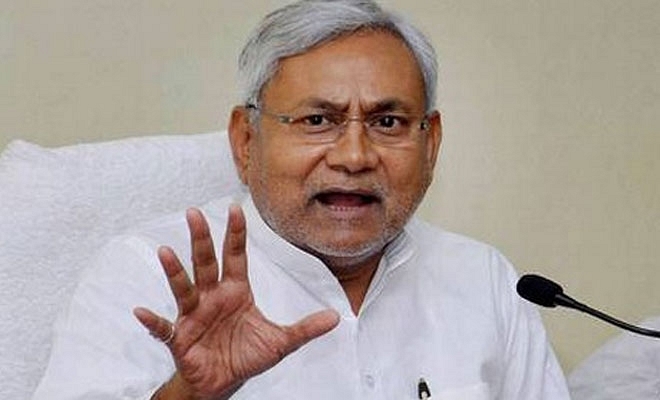Politics
Is the Bihar election really about “Sushasan” or Nitish Kumar’s ambition?

Should Nitish Kumar alone be credited for bringing back stability and development in Bihar? A close look reveals that most of the development during his Chief Ministership happened only when the BJP was part of the ruling alliance.
Nitish Kumar transformed Bihar, ended the Jungle Raj and put it on the path of development after the Lalu-Rabri era. Or at least that’s what we are being told these days. But was it really Nitish who transformed Bihar? While he was certainly the face of the JDU-BJP alliance does he deserve to get all the credit?
Everyone knows that 15 years of Lalu-Rabri rule was a dark period in Bihar’s history. This era is pejoratively referred to as ‘jungle-raj’. Crime was extremely high, kidnappings in broad-daylight were the norm as were rapes and murders..
Conventional wisdom seems to suggest that once Nitish Kumar took over the state in 2005, he started clamping down on crime, built roads, provided electricity and transformed Bihar. This, he is said to have done over the course of a decade, earning the moniker of ‘Sushasan Babu’. There are two issues with this narrative.
First, a cursory look at the National Crime Records Bureau (NCRB) records on violent crime in Bihar raises some interesting questions. Take a look at the number of kidnappings and murders over time from 2006-2014. They have actually increased. Rapes are marginally lower. The only bright spot is that dacoities have fallen drastically over time.
Second, the BJP was a rock-solid support for Nitish and played a huge role in the development that took place. There was absolute political stability, with no political blackmail or brinkmanship. This climate of stability allowed development to take place.
It is clear that the law and order situation has worsened since 2012 as reflected by the rise in the number of rapes, murders and kidnappings. Is it a co-incidence that the cold-war between the BJP & JDU started building up in 2012 and eventually led to their break-up in 2013?
Source of Data:National Crime Records Bureau
Now lets look at the economy.
Undoubtedly Bihar has come a long way from 2005, but notice the trends sincethe BJP-JDU tensions began in 2012. Note that FY ’13 pertains to 9 months of the calendar year 2012.
So, as we can see, ever since BJP has been out of the picture, Nitish Kumar’s “Sushasan Babu” tag has been eluding him. Now that Nitish has allied with the architect of the ‘jungle-raj’ it is anybody’s guess as to whether he will be able deliver on governance.
So there is this question of whether Nitish can save Bihar from Jungle Raj redux. But before we get there we must ask ourselves whether Nitish is actually in control of the alliance and the overall political direction. True, he is the Chief Ministerial candidate of the JDU-RJD-Congress alliance. However, if you take a look at theseat distribution, you will find that the JD(U) and RJD are equal partners – contesting 100 seats each.
Therefore, it is only reasonable to think that a vote for the JD(U) is a vote for the RJD – the party behind ‘jungle raj’ years. Even the Congress, a dying beast, has managed to arm-twist Nitish into giving them 40 seats.
This is the sum-total of all the power and leverage JDU has over this alliance. While the tug-of-war over seats etc continues between JDU and Lalu, Congress is likely to benefit the most out of this alliance because they can be the deciding factor in the game. We’ll just close with this common Awadhi saying,
“काजल की कोठरी में कितनौ सयानौ जाये, एक लीक काजल की जौ लागी है, तै लागी है ।”
(No matter how smart a person enters a coal mine, he is bound to get stained by the darkness).
Introducing ElectionsHQ + 50 Ground Reports Project
The 2024 elections might seem easy to guess, but there are some important questions that shouldn't be missed.
Do freebies still sway voters? Do people prioritise infrastructure when voting? How will Punjab vote?
The answers to these questions provide great insights into where we, as a country, are headed in the years to come.
Swarajya is starting a project with an aim to do 50 solid ground stories and a smart commentary service on WhatsApp, a one-of-a-kind. We'd love your support during this election season.
Click below to contribute.
Latest